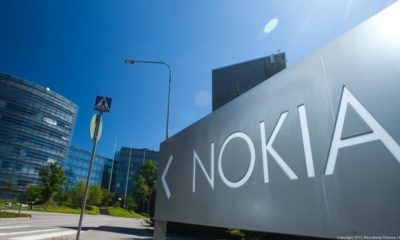Explosive data has become the core means of production and the catalyst for the digital economy. In the next five to 10 years, the amount of data to be stored will increase from 32 ZB in 2018 to 180 ZB by 2025. This data explosion will further drive the maturity of the data value chain and propel enterprises’ decision-making and innovation.
We are at the dawn of an Intelligent Era, and data centre operators need to rise to the challenge. To take one example, when building new data centres, they should evaluate all-flash options. Let’s take a look at some of the best practices that they should consider.
Four major challenges facing the reconstruction of next-gen data centres
Data centres are responsible for centralised storage, computing, and the exchange of data resources. In light of explosive data growth, diverse data types, and the ever-increasing importance of it, data centres face four major challenges.
First, the in-depth digital transformation of enterprises causes huge numbers of offline services to go online, and innovative services to emerge one after another. This is exemplified by the financial sector, where the transactions per second of large banks are increasing exponentially as a result of ecommerce and mobile payments.
Second, data centres have become a major power consumer. Currently, the total global power consumption of data centres is around 2% to 3% of the annual world power consumption. High energy consumption results in high electricity costs and carbon emissions. According to the United Nations Environment Programme, global emissions must fall by 7.6% per year for the next decade to meet the goal of limiting global temperature rise to 1.5°C. The European Union has also pledged to achieve net-zero carbon emissions by 2050. Under overwhelming environmental pressures, it’s imperative to save energy and reduce emissions.
In addition, many enterprises suffer huge economic losses and social impacts due to data loss and service disruption each year, which results in an estimated 8% fall in revenue. In the financial industry, where data is the lifeblood of business, the loss caused by system downtime reaches up to $6.48 million per hour.
Finally, O&M (operations and maintenance) efficiency is one of the core factors in the development of data centres. This is made difficult by a large number of devices and interfaces from multiple vendors affecting the ability of organisations to locate faults and respond to service requests. Over the next five years, the amount of data maintained per capita will increase fivefold, which will further increase the difficulty of O&M and labour costs.
Therefore, how to build a green, reliable, and intelligent all-flash data centre becomes a major challenge for future sustainable development.
Three important construction considerations for designing All-Flash data centres
Building an all-flash data centre requires a comprehensive upgrade of the media, and also the integration of data centre resources and architecture reconstruction, in order to meet diverse future service requirements.
Specifically, this includes all-flash upgrade for multiple types of data and service scenarios, all-IP reconstruction for data centre networks, and full-lifecycle intelligent O&M for the entire data centre. The multi-layer all-flash solution helps build a greener data centre with higher efficiency and availability, more intelligent O&M, lower TCO, and zero network bottleneck.
1. All-scenario Flash fast-tracks your services
All-scenario media flash indicates that diverse types of workloads are stored in flash media, for example, HDDs are replaced by SSDs in various scenarios, such as enterprise core systems, HPC, video, and disaster recovery. This helps reduce costs and improve efficiency. Offering the same capacity, SSDs reduce power consumption by 70% and space occupation by 50%. This slashes the total cost of ownership (TCO) of data centres and helps them go carbon neutral. In addition, the system performance of SSDs is 40x higher than that of HDDs. High-performance SSDs become an ideal choice in peak-time scenarios.
Services require high-end storage to undertake more missions, which is another inevitable trend in the development of all-flash data centres. Last but not least, all-scenario flash is characterised by comprehensive data protection. Faster disaster recovery, higher use frequency of copies, and longer retention are in high demand.
2. All-IP data centre network unlocks the potential of Flash
All-scenario flash drives the transformation of data centre networks while NVMe maximizes the value of SSDs. Therefore, faster media and protocols call for faster networks. That brings us to the NVMe over Fabric (NVME-oF) storage network. NVMe-oF uses the IP network to innovate and upgrade the previous dedicated network, achieving higher bandwidth and lower latency. It is also easy to manage using the IP network, which is the optimal solution for implementing end-to-end NVMe. NVMe-oF solutions are currently trending in the industry.
Thanks to continuous R&D in the network and storage fields, Huawei has improved the reliability, performance, and ease-of-use of the mainstream standard NVMe-oF, as exemplified by the company’s NoF+ Solution with intelligent lossless network for Huawei OceanStor. This helps push the development of the storage network to the next level.
Enhanced reliability: Enables proactive notification, rather than passive response, identifies congestion and faults in advance, and works with OceanStor storage to implement failover within seconds.
Enhanced performance: Changes the traditional static watermark mode and optimises the network prediction capability using algorithms, further unleashing the powerful performance of Huawei OceanStor all-flash storage.
Plug-and-play solution: Implements one-click capacity expansion and automatic management and enhances ease of use in future construction.
3. Intelligent O&M platform improves full-lifecycle O&M efficiency
All-flash data centres must deliver full-lifecycle intelligent O&M to implement automation and intelligence in planning, deployment, O&M, and optimisation. In the planning phase, resources are precisely planned, and the focus has shifted from device upgrade to full-lifecycle data management. In the deployment phase, global resources are automatically provisioned. In the O&M phase, full-stack intelligent O&M is implemented to change reactive inspection to proactive discovery. In the optimisation phase, agile configuration optimisation and automatic resource prediction and change are implemented. The optimisation is performed using intelligent algorithms instead of expert experience.
Conclusion
Huawei’s all-flash data centre solution (https://bit.ly/3ySD2jS), which includes OceanStor all-flash storage, OceanProtect data protection, NoF+ storage network, and DME full-lifecycle intelligent O&M, provides an effective way to build a future green and energy-efficient all-flash data centre. It has been widely used in core service systems of various industries, such as finance, carriers, healthcare, and manufacturing, to better mine enterprise data value and accelerate the digital transformation journey. Along the way, emerging modern all-flash data centres are sure to achieve great things while pushing social and economic production to new heights.


 Naira4 weeks ago
Naira4 weeks ago
 News3 weeks ago
News3 weeks ago
 Education4 weeks ago
Education4 weeks ago
 Social Media4 weeks ago
Social Media4 weeks ago
 Technology4 weeks ago
Technology4 weeks ago
 Investment4 weeks ago
Investment4 weeks ago
 Dividends4 weeks ago
Dividends4 weeks ago
 Economy4 weeks ago
Economy4 weeks ago














